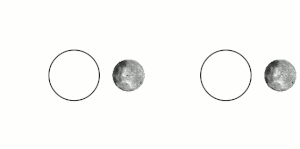 Instrument Characteristics
Instrument Characteristics
The L-band and S-band radars are being designed to work independently or together. The L-band hardware is being developed by JPL and its industrial partners, and the S-band electronics portion by ISRO. The feed apertures at L and S band are built by JPL and ISRO respectively as well, phase-matched to their respective electronics and cabling. In this sense, each radar will be a self-contained instrument up to the radiated energy from the feed aperture. Thereafter, both will share the same reflector, with a nearly identical optical prescription (F/D=0.75). Because a distributed feed on a reflector-feed antenna has a single focus, much of the radiated and received energy is away from the focus. Since S-band wavelength is 2.5 times shorter than L-band, yet the feed is the same length to achieve identical swath coverage, the S-band system has greater deviations from the focus. Thus the design has been iterated to derive the best offset, tilt, and phasing of each radar to balance the performance across the two systems. This analysis has been done independently by the JPL and ISRO teams, then cross-compared to validate.
For the radars to operate together as a dual-frequency system, it is necessary to share a 10 MHz oscillator and pulse timing signals to synchronize transmit events from each radar, and to minimize phase inconsistencies across systems. The development units at JPL and ISRO have been fabricated, and the first interface verification test was conducted in December 2016. This paper will show some examples from this successful test.
Another concern is the coupling between the feed apertures. In the current design, the two apertures would be mechanically and electrically separated, with manageable coupling. Presently dual-frequency operations are planned only over Indian science investigation sites, but other areas would be possible. A compatibility test between the engineering model apertures is planned for early 2017; this paper will report on the findings of that test.
To meet the requirement of a swath over 240 km in width at fine resolution, using full polarimetry where needed, it was necessary to implement a scan-on-receive system that allows for digital tracking of multiple pulses on the feed at any one time [3]. This “SweepSAR” implementation is done using individually addressable Transmit Receive (T/R) modules at both L and S-band. L-band has 12 T/R modules per polarization and S-band has 24. On transmit, all are activated to illuminate the entire feed, which creates a narrow illumination pattern on the reflector in elevation. This in turn creates a broad illumination pattern on the ground. On receive, the echo, which is localized in space and time, reflects off the full area of the reflector, giving maximal signal. As the echo sweeps across the ground and propagates back to space, it is reflected and sweeps across the feed. Each receive channel can track the echo individually, but rather than recording each channel separately and recording all the data, the radars combine three adjacent T/R modules to form a beam that allows a continuous swath to be generated on orbit. This saves data rate to the ground, but requires precise real-time relative calibration of the electronics to ensure the summation of channels is done optimally. Filtering, decimation, calibration estimation, and combining are done in a set of FPGAs or ASICs on each radar
Current Status
The NISAR project successfully completed its Preliminary Design Review in June 2016 and has now entered the Development Phase of the project lifecycle. Engineering model hardware exist for all the major L-band technology components, including the T/R module, first stage digital processor, second-stage digital combiner, control units, and frequency synthesizers. These subsystems have been tested over temperature, and are currently in revision for the Flight Model units.
Several key development partnerships on the NASA side are now in place. The 12-m reflector will be developed by Astro Aerospace - Northrop Grumman. The Solid State Recorder will be developed by Airbus Defence and Space, and the JPL-designed L-band transmit receive modules will be manufactured by The Boeing Corporation. In December 2016, ISRO brought development model interface elements of the S-band radar to JPL for interface testing. This successful test was the first joint ISRO and NASA hardware activity on this project. An antenna aperture compatibility test is planned for 2017 at ISRO.




